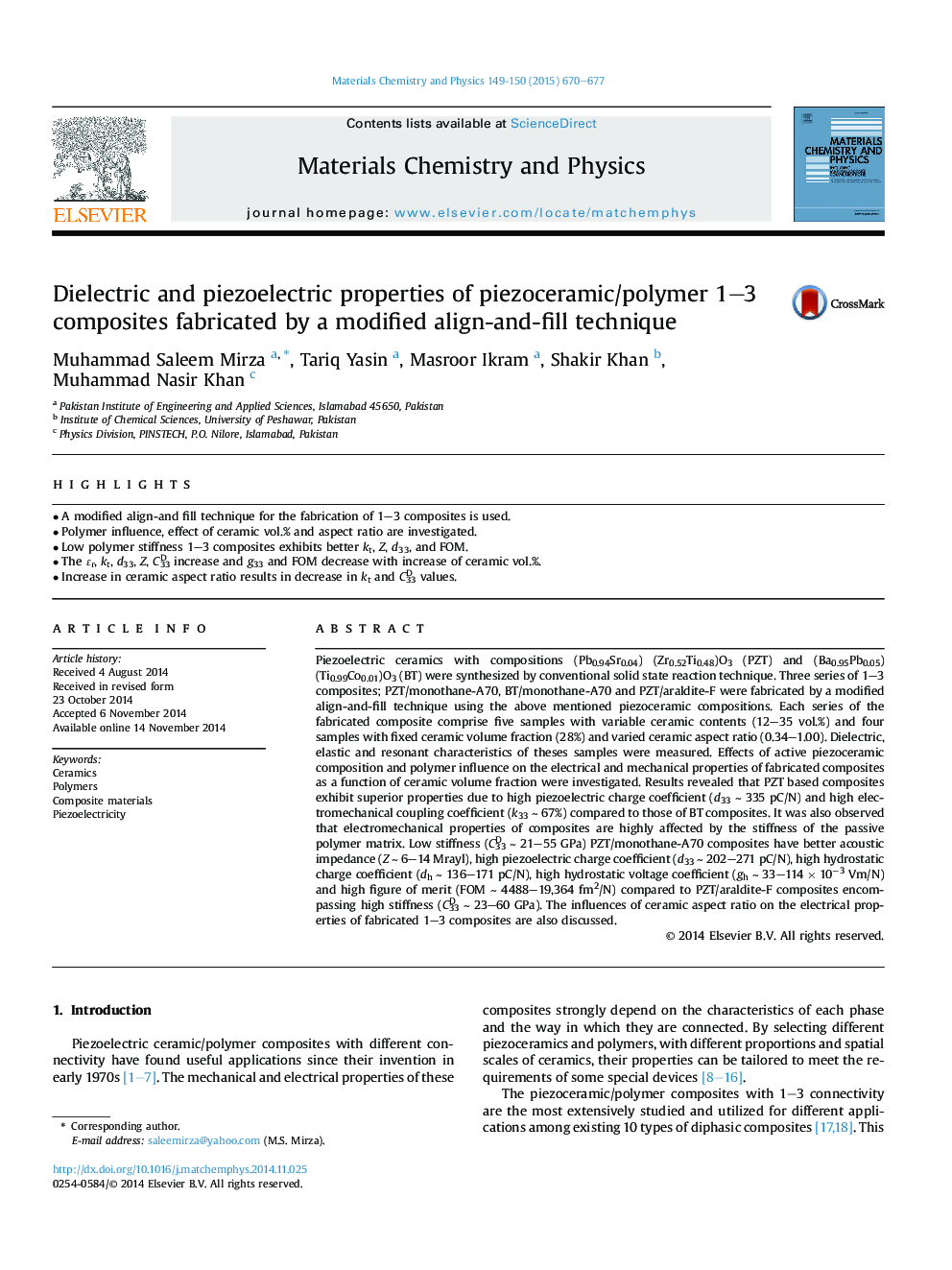| Article ID | Journal | Published Year | Pages | File Type |
|---|---|---|---|---|
| 1521467 | Materials Chemistry and Physics | 2015 | 8 Pages |
Abstract
Piezoelectric ceramics with compositions (Pb0.94Sr0.04) (Zr0.52Ti0.48)O3 (PZT) and (Ba0.95Pb0.05) (Ti0.99Co0.01)O3 (BT) were synthesized by conventional solid state reaction technique. Three series of 1-3 composites; PZT/monothane-A70, BT/monothane-A70 and PZT/araldite-F were fabricated by a modified align-and-fill technique using the above mentioned piezoceramic compositions. Each series of the fabricated composite comprise five samples with variable ceramic contents (12-35 vol.%) and four samples with fixed ceramic volume fraction (28%) and varied ceramic aspect ratio (0.34-1.00). Dielectric, elastic and resonant characteristics of theses samples were measured. Effects of active piezoceramic composition and polymer influence on the electrical and mechanical properties of fabricated composites as a function of ceramic volume fraction were investigated. Results revealed that PZT based composites exhibit superior properties due to high piezoelectric charge coefficient (d33 â¼Â 335 pC/N) and high electromechanical coupling coefficient (k33 â¼Â 67%) compared to those of BT composites. It was also observed that electromechanical properties of composites are highly affected by the stiffness of the passive polymer matrix. Low stiffness (C33D â¼Â 21-55 GPa) PZT/monothane-A70 composites have better acoustic impedance (Z â¼Â 6-14 Mrayl), high piezoelectric charge coefficient (d33 â¼Â 202-271 pC/N), high hydrostatic charge coefficient (dh â¼Â 136-171 pC/N), high hydrostatic voltage coefficient (gh â¼Â 33-114 Ã 10â3 Vm/N) and high figure of merit (FOM â¼Â 4488-19,364 fm2/N) compared to PZT/araldite-F composites encompassing high stiffness (C33D â¼Â 23-60 GPa). The influences of ceramic aspect ratio on the electrical properties of fabricated 1-3 composites are also discussed.
Related Topics
Physical Sciences and Engineering
Materials Science
Electronic, Optical and Magnetic Materials
Authors
Muhammad Saleem Mirza, Tariq Yasin, Masroor Ikram, Shakir Khan, Muhammad Nasir Khan,
